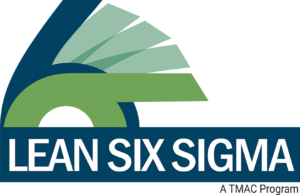Leveraging People Skills to Drive Lean Six Sigma Success
As Green Belts and Black Belts, your role in Lean Six Sigma is more than just applying statistical tools and the DMAIC methodology. Success depends on how well you lead teams, facilitate change, and bring out the best in people—in other words, your People Skills.
Some practitioners are naturally gifted in this area, but our experience at TMAC shows that all of us benefit from a structured approach to applying soft skills. Two frameworks that can strengthen your ability to do this are Gallup CliftonStrengths and Belbin Team Roles. These soft skills methods use personality profiles to help individuals better understand themselves and their coworkers.

CliftonStrengths: Building on Natural Talents
CliftonStrengths, created by psychologist Don Clifton, shifts the focus from fixing weaknesses to amplifying natural talents. The widely used assessment has been taken by more than 39 million people and ranks individuals across 34 themes—such as Strategic, Achiever, Relator, Communication, Analytical, and Adaptability—helping people identify and apply what they do best.
How does this help Lean Six Sigma leaders? It strengthens your ability to facilitate teams in several ways:
- Improved Self-Awareness: Understanding your own strengths allows you to lean into them when facilitating. For example, if you lead with Analytical, you can excel at clarifying data-driven decisions. If you have Communication high, you can simplify complex ideas for your team.
- Better Insight into Team Strengths: If teammates also complete the assessment, you can recognize their strengths and assign project tasks more effectively. Someone high in Achiever thrives when given stretch goals and deadlines, while someone high in Harmony can de-escalate conflict in a tense discussion.
- Stronger Engagement and Follow-Through: By framing project work around team members’ strengths, you foster greater ownership and motivation. Action items are more likely to be completed on time.
When Green and Black Belts use CliftonStrengths, they aren’t just managing tasks—they’re unlocking team energy, creativity, and commitment.
Belbin Team Roles: Filling the Gaps in Collaboration
Dr. Meredith Belbin, a British management consultant, researched how teams function in the 1970s at Henley Management College. While CliftonStrengths focuses on individual talents, Belbin Team Roles emphasizes the functional roles people take on in a group.
Belbin identified nine roles—for example:
- Plant (creative innovator)
- Monitor Evaluator (analytical critic)
- Coordinator (delegator)
- Implementer (practical doer)
- Shaper (momentum driver)
Somewhat like CliftonStrengths, the Belbin assessment highlights which roles a person naturally excels at on a team. However, the assessment also identifies roles a person is less comfortable with but can perform if needed, and which they may struggle with. The key insight is that successful teams require a balanced mix of roles to perform effectively.
In Lean Six Sigma projects, where cross-functional collaboration is the norm, Belbin provides leaders with practical advantages:
- Role Flexibility: Team members can flex into secondary roles when needed. For example, during the Control phase, having Implementers and Completer-Finishers ensures sustainability.
- Balanced Teams: A group full of Shapers may clash, while one full of Plants may never finish. Belbin helps ensure a mix that drives both creativity and execution.
- Gap Spotting: If your project stalls, Belbin can reveal missing roles. For example, without a Completer-Finisher, follow-through may suffer. Without a Plant, brainstorming may fall flat.
Bringing the Two Together in Lean Six Sigma
When used together, CliftonStrengths and Belbin provide Green and Black Belts with a two-dimensional lens for team leadership:
- CliftonStrengths highlights what energizes and motivates individuals.
- Belbin clarifies how those individuals behave within a team setting.
Practical ways to integrate both in your projects include:
- Kickoff Alignment: Use CliftonStrengths to introduce each team member’s talents, then map Belbin roles to ensure balanced collaboration.
- Task Assignment: Align work to personal strengths (Clifton) while ensuring coverage of team functions (Belbin).
- Conflict Navigation: Strengths help you reframe conflict as “talents in tension,” while Belbin shows when role clashes are at play.
- Sustainment: Pair Achievers/Implementers with Relators/Coordinators to ensure both progress and long-term adoption.
- Better Communication: Both tools deepen understanding of how people think, act, and perform—leading to more open, honest, and effective collaboration.
Click here for more on CliftonStrengths. And here to learn more about Belbin Team Roles.
Final Thought
Lean Six Sigma leaders often pride themselves on mastering statistical methods and process tools. Yet the real differentiator for project success is how effectively you lead people through change. By integrating CliftonStrengths and Belbin Team Roles into your toolkit, you gain sharper insights into both individual motivation and team dynamics—helping you facilitate with confidence, navigate challenges smoothly, and deliver stronger, more sustainable project outcomes.



